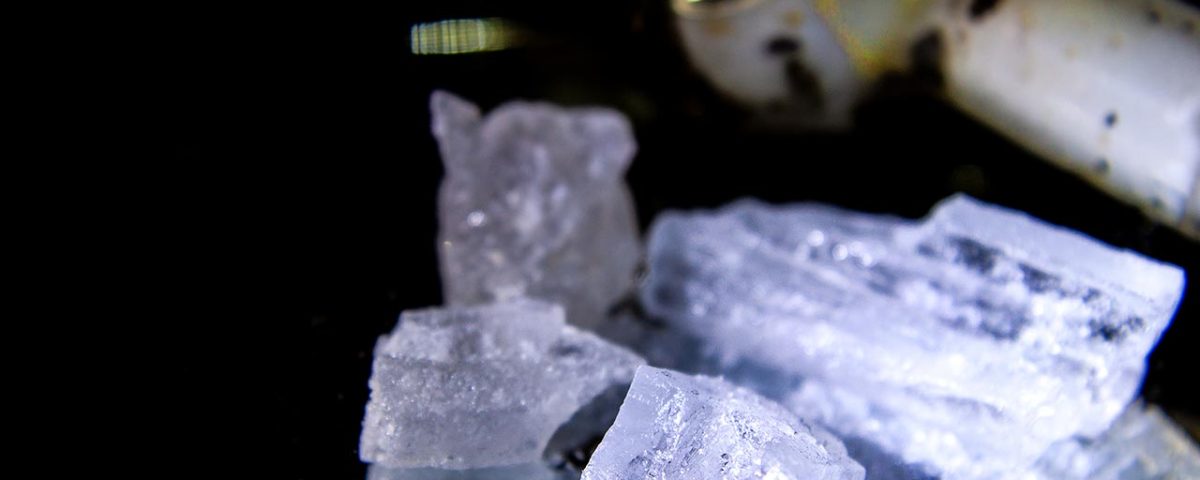Updated July 2021
Methamphetamine, otherwise known as meth, was originally used to treat ADHD, but like many other drugs, people started abusing it because of the high it provides and its addictive quality.
Now, it is estimated that about 1.6 million people have used meth in the past year.1 The problem is that many people do not understand what they are putting into their bodies and/or the damage that it can cause. Frequent and/or large amounts of methamphetamine in your system can lead to serious and irreversible damage. While the high from meth may wane after less than a day, methamphetamine remains in your system for much longer and may even be detectable up to months later. Banyan Chicago is sharing an overview of how long meth stays in your system and why.
What Is Meth?
Meth is a highly addictive stimulant that arouses the central nervous system. It typically comes in the form of a powder, but it can be smoked, snorted, injected, and even swallowed in pill form. Meth is often abused and sold on the street under many different nicknames. Because of its highly addictive quality, many users struggle to give up meth on their own and must seek professional crystal meth addiction treatment to finally stop for good. Prolonged abuse can lead to serious health problems as well as a drastic decline in physical appearance.
Questions about our Facilities or Programs?
Our admissions coordinators are available 24/7 to answer any questions you may have as you consider whether treatment at Banyan is right for you or your loved one.
How Long Is Meth in Your System?
Many users wonder, “How long does meth stay in your system?” but the answer varies depending on certain factors. Every person is different so there is no set time for how long meth stays in your system. Several factors are at play and can affect this number. Generally, the high from meth starts relatively quickly and withdrawal begins as soon as a day after use stops, though meth remains in the body’s system for much longer. The metabolism of meth is faster in some places than others, but traces of meth in your system can be found even months later.
How Long Does a Meth High Last?
So, how long does meth keep you high? The first initial effect of methamphetamine use is a euphoric rush followed by a more steady but lasting high. When people high on meth actually begin to feel the high from meth in their system depends on several factors, including the route of administration as well as meth’s half-life. The half-life of methamphetamine in the bloodstream is four to five hours, but the rush will typically begin relatively quickly after administration. A crystal meth high can last anywhere from 6 to 14 hours depending on the person and dose. Methamphetamine’s high also tends to be longer than many other drugs of abuse. As more time passes, meth will wear off, but some users will take more to make up for its waning effects in a binge and crash cycle.
The initial effects of a meth high include:
- Feeling of euphoria
- Increased heart rate
- Increased blood pressure
- Raised body temperature
- Possible anxiety
How long a meth high lasts is relatively short compared to the duration of its other side effects. If a person experiences other crystal meth high effects like problems breathing, psychosis, irregular heartbeats, or chest pains after smoking meth, these are signs of overdose that need immediate medical attention. What meth does to you is dependent on other factors like dosage, health condition, and whether you’ve taken other substances. Although the meth high lasts less than a day, meth can remain in the system for much longer and the body will feel other effects as the meth is metabolized.
Meth Withdrawal Timeline
When a person becomes addicted to meth and dependent on having certain levels of the drug in their system, they will experience a come down as the body metabolizes the meth and the effects wear off. This process is known as withdrawal and can be accompanied by mild to severe symptoms depending on the individual and the addiction. Generally, the greater the initial dose, the longer it takes the meth to leave the body and the longer meth withdrawal will last. Typically, meth withdrawal can begin a day after use stops and will peak after a week or so. Symptoms will usually last about two weeks with the exception of lingering psychological symptoms that can reappear even years after use ceases.
Symptoms of meth withdrawal may include:
- Headaches
- Irregular heartbeat
- Muscle pain and aches
- Anxiety
- Depression
- Sleep problems
- Intense meth cravings
Although meth withdrawal symptoms may mostly stop after two weeks, the body is not done breaking down the methamphetamine completely and it can still be detected by certain drug tests.
Metabolizing Meth
Even if you stop feeling the effects, there is still meth in your system. Methamphetamine is easily absorbed by the bloodstream and then distributed throughout organs in the body including largely the lungs, liver, brain, and kidneys.2 As soon as the drug enters the bloodstream, your body will start metabolizing it, but this process takes time. Methamphetamine takes longer to break down than many other drugs, including cocaine.
Because methamphetamine’s half-life is four to five hours in the bloodstream, meth can last in the system for a while. Usually, it takes about five half-lives for a drug to be cleared from a person’s system, meaning that it can take up to 25 hours for meth to leave your system. The metabolism of meth is done by liver enzymes that will break down methamphetamine into the byproducts amphetamine and para hydroxymethamphetamine (pOH-MA). The kidneys are also largely responsible for eliminating methamphetamine from the body. Not only will they excrete hydroxymethamphetamine, the byproducts of methamphetamine metabolism, but also 37-54% of methamphetamine excreted by the body in the form of urine is unchanged.2
Detecting Meth in Drug Tests
Drug tests are meant to detect certain drugs like methamphetamine, but some are more accurate and able to go further back than others. Some drug tests can reveal the lingering meth in your system even days after you stop feeling the effects. Remnants of meth can be found in various places in the body after the initial dose and will remain in these places for different amounts of time.
- Urine Tests – How long meth stays in urine can range from a few to seven days, especially in heavier users.4
- Blood Tests – Blood tests can detect methamphetamine in the blood up to two days after use stops.4
- Saliva Tests – Meth’s typical detection time by saliva tests is about one day, but in some case, it can be detected up to three days later.4
- Hair Tests – Hair drug tests can detect the presence of methamphetamine 90 days after methamphetamine use stops and in some cases as far back as 120 days.5
These drug tests are not perfect. False positives are possible when it comes to testing people for methamphetamine. These can occur for several reasons including use of a variety of prescription and over-the-counter medications. One study has found that as many as 6% of positive methamphetamine drug tests are a result of these medications.6
Factors That Impact How Long Meth Stays In Your System
While there are general timelines regarding meth’s breakdown in the body in certain areas, these numbers are not exact. How long crystal meth stays in your system will depend on several different factors including:
- Genetics
- Tolerance
- Dosage
- Frequency of use
- Route of administration
- Kidney and liver function
- Overall health
- Age
- Weight
- Activity level
- Metabolism
Getting into treatment is easy with our free insurance verification
"*" indicates required fields
Getting Meth Out of Your System
While there are many drug test myths about how to beat these tests, even with meth in your system, the only way to completely rid your body of methamphetamine is to abstain from use for several months. This will give the body enough time to fully break down the meth and flush the body of it. During this period of abstinence, many people will begin to see improvement in their overall physical and mental health. Because methamphetamine is addictive and the body does become dependent on it, coming down off meth can be difficult to do on your own. Our professional substance abuse treatment in Chicago can help you or a loved one get there.
There are many different stages of meth’s effects on the body. From the initial high to the slow withdrawal, meth comedown symptoms are dangerous in any capacity when abused and the drug can remain in the body for much longer than the effects suggest. Abusing crystal meth will also lead to harmful long-term effects. Getting meth out of your system can be dangerous if attempted without medical assistance. If you or a loved one is addicted to meth or another drug, get professional help instead. Our Chicago PHP works with people addicted to various drugs to let them regain control of their lives.
To learn more about our various programs as well as our drug and alcohol rehab Chicago, reach out to us today at 888-280-4763.
Sources:
- National Institute on Drug Abuse - What is the scope of methamphetamine misuse in the United States?
- ASPET - Interaction and Transport of Methamphetamine and its Primary Metabolites by Organic Cation and Multidrug and Toxin Extrusion Transporters
- NCBI -The bioavailability of intranasal and smoked methamphetamine.
- Wiley Online Library - A review of the clinical pharmacology of methamphetamine
- NCBI - Duration of detection of methamphetamine in hair after abstinence.
- Oxford Academic - Differentiating Medicinal from Illicit Use in Positive Methamphetamine Results in a Pain Population
Related Reading:
What Causes Meth Face?
What Are Meth Mites & Why Do They Occur?









